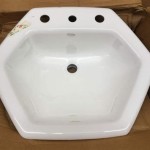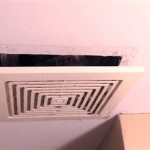How to Replace a Single Bathroom Wall Tile
Replacing a single bathroom wall tile is a relatively straightforward DIY project that can refresh the look of your bathroom without requiring a full-scale renovation. Whether the tile is cracked, chipped, or simply outdated, the process involves removing the damaged tile, preparing the surrounding area, and installing a new tile. This article provides a step-by-step guide to successfully replace a single bathroom wall tile, ensuring a seamless and aesthetically pleasing result.
1. Gather the Necessary Tools and Materials
Before embarking on the tile replacement project, it is essential to gather all the necessary tools and materials. This ensures a smooth and efficient process, minimizing interruptions and potential delays.
Here is a list of essential tools and materials:
- Chisel and hammer
- Utility knife
- Safety goggles
- Work gloves
- Bucket
- Sponge
- Grout removal tool
- Tile saw or wet saw (if necessary)
- Tile adhesive
- Grout
- Grout sealant
- New tile
- Masking tape
- Level
- Measuring tape
- Pencil
The specific tools and materials required may vary slightly depending on the type of tile being replaced and the existing grout.
2. Prepare the Area and Remove the Old Tile
Once the tools and materials are gathered, the next step is to prepare the area around the damaged tile and remove the old tile. This involves protecting surrounding surfaces and carefully removing the existing tile and grout.
Here are the steps for preparing the area and removing the old tile:
- Protect Surrounding Surfaces: Use masking tape to protect the surrounding tiles, walls, and fixtures from potential damage. Cover the floor with a drop cloth or old towels to prevent debris and spills.
- Remove Grout: Use a grout removal tool to carefully remove the grout around the damaged tile. Be mindful not to scratch or damage the surrounding tiles.
- Remove Old Tile: Use a chisel and hammer to carefully chip away the old tile. Start by gently tapping the chisel around the edges of the tile, then work your way towards the center. Be patient and avoid excessive force to minimize damage to the surrounding area.
- Clean the Area: Once the old tile is removed, thoroughly clean the area with a damp sponge and a mild cleaning solution to remove any remaining grout or debris.
It is crucial to remove the old tile and grout completely to ensure proper adhesion for the new tile.
3. Install the New Tile
After preparing the area, the next step is to install the new tile. This involves applying tile adhesive, positioning the new tile, and allowing it to cure.
Here are the steps for installing the new tile:
- Apply Tile Adhesive: Apply a thin layer of tile adhesive to the back of the new tile using a notched trowel. The size of the notch will depend on the size of the tile being installed.
- Position the Tile: Carefully position the new tile in the empty space, ensuring it is level and flush with the surrounding tiles. Use a level to check the alignment and make adjustments if necessary.
- Press Firmly: Press firmly on the new tile to ensure proper adhesion. Avoid moving the tile once it is in place.
- Allow to Cure: Allow the tile adhesive to cure according to the manufacturer's instructions. This typically takes 24 hours.
Ensure the new tile is properly centered and aligned before allowing the adhesive to cure.
4. Apply Grout and Sealant
Once the tile adhesive has fully cured, the next step is to apply grout to fill the gaps between the tiles and apply sealant to protect the grout.
Here are the steps for applying grout and sealant:
- Apply Grout: Use a grout float to apply grout to the gaps between the tiles. Press the grout firmly into the spaces to ensure complete coverage and smooth edges.
- Clean Excess Grout: Once the grout has set slightly, use a damp sponge to remove any excess grout from the surface of the tiles. Be sure to wipe the grout lines clean and remove any residue.
- Allow Grout to Cure: Allow the grout to cure according to the manufacturer's instructions, usually 24-48 hours.
- Apply Grout Sealant: Once the grout has cured, apply a grout sealant to protect the grout from stains and moisture. Apply the sealant according to the manufacturer's instructions.
Allow the grout sealant to dry thoroughly before using the bathroom.

How To Remove Replace One Bathroom Tile Ceramic Repair

Replacing Old Shower Border Tiles Young House Love

Replacing Ed Wall Tile Art Renovation

How To Upgrade Bathroom Tile Without Replacing

At Home Repairing Bathroom Tiles Can Be A Challenge

How To Tile A Bathroom Wall Granada Cement Blog Ideas Tips And More

How To Cover Wall Tile Without Removing Them In Bathrooms

Removing An Old Shower Tile Border Young House Love

Shower Tile Installation Step By Four Generations One Roof

Can You Reuse Ceramic Tile
Related Posts







